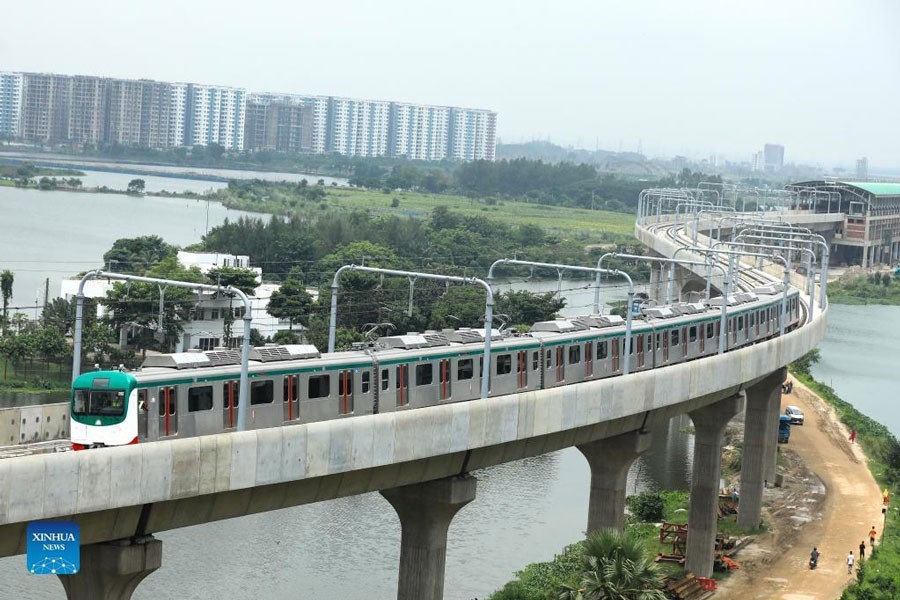Dhaka will see its metro rail by the end of 2028, provided everything goes according to the plan. It is, however, unlikely, as experiences show that this kind of complex infrastructure project will not be able to meet the deadline. Moreover, it is unnecessary to stress on finishing the work on time. What is more important is to raise questions about the move to build another costly mega project.
The proposed underground metro rail project is part of the Mass Rapid Transit (MRT) Line-1 having around 30 km in length. About 19km from Hazrat Shahjalal International Airport to Kamalapur, one part is underground. Another part is elevated, around 11 km, from Notun Bazar to Purbachal. The Notun Bazar will serve as an interchange station. The project's completion cost is estimated at Tk 525.61 billion, of which the Japanese government will fund Tk 394.50 billion. The Bangladesh government will invest the rest amount of Tk 131.11 billion.
Though the project was approved in 2019, it was suspended due to Covid-19. Later, at the end of last year, it revived again. The final agreement between the relevant parties was signed in the third week of the last month to start the construction. So it is clear that the government has no intention to abandon the project no matter how costly and less viable this is. Though the feasibility study of the project portrays a rosy picture of benefits after the completion of the construction, many things are ignored here.
Despite modern engineering solutions, the difficulties and complexities of constructing an underground metro rail are beyond measure. The designers and engineers have already faced some tough challenges in a densely populated city like Dhaka, which has also mainly grown unplanned or on a flawed plan. Though it may not be impossible to overcome the challenges, the cost will be quite high, no doubt, and the project may see an upward revision of the estimated cost within two to three years.
For growing cities in developing countries, following the developed nations, the metro rail system has emerged as the preferred means of providing better and faster mobility. There is, however, a mix of underground, over-ground and elevated rail tracks across the cities depending on cost and environment.
Generally, an elevated system costs less than one-third of an underground network and half of the cost of a partially underground line. Underground or subway lines also require more electricity for cooling and lighting than elevated or above-ground tracks. But again, avoidance of traffic congestion, pollution and maintenance usually makes an underground system cheaper in the long run. For the subway, the land acquisition cost is small, and there is little need to demolish and shift existing structures and utilities.
Since the objective of the metro rail is to provide safer and faster mobility, alternatives also need to be adequately explored. Bus-based public transport solution is less costly although it is no match for metro rail. Nevertheless, replacing the worn, unfit, dirty public buses in Dhaka with decent and green buses is an option the authorities must consider seriously. Delhi has developed a fantastic public bus system along with its mixed-tracked metro rail to make public transport efficient and effective.


